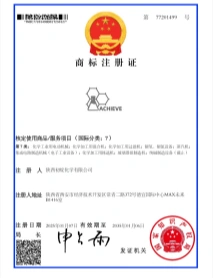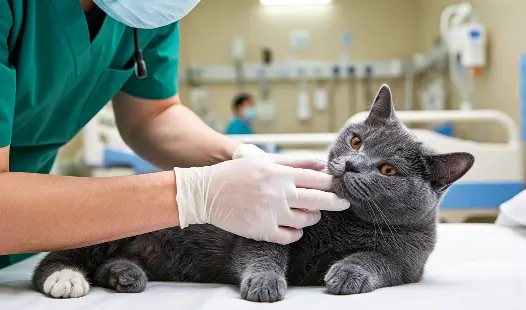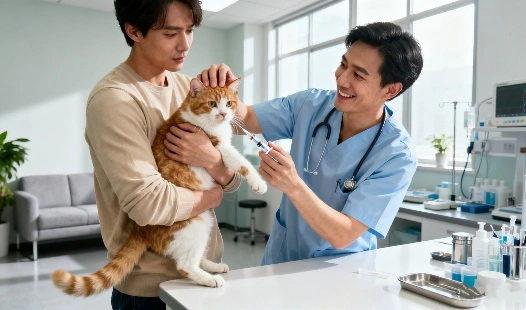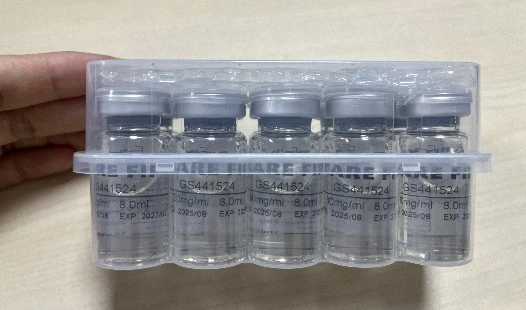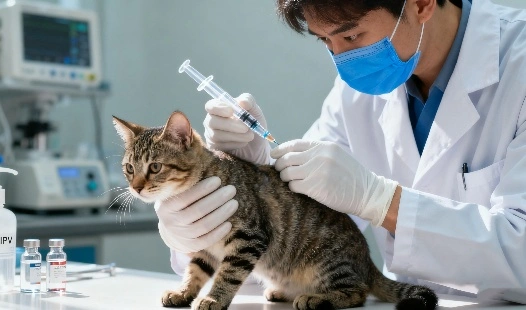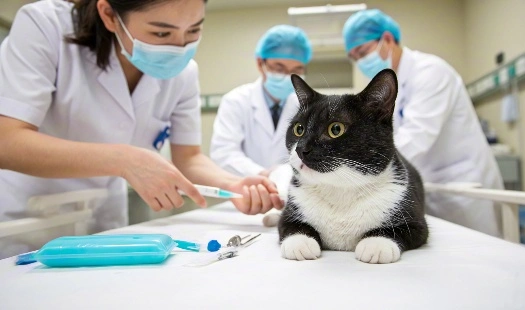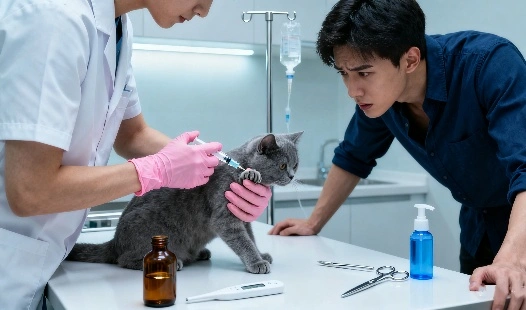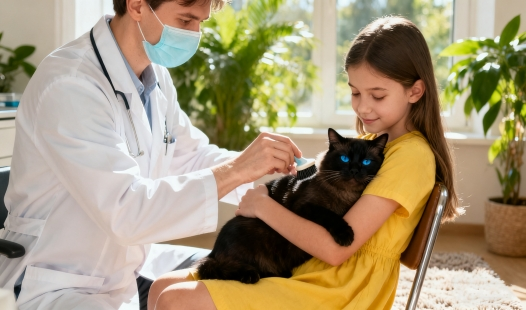Worldwide, cats are afflicted with the debilitating and often fatal illness known as feline infectious peritonitis (FIP), which continues to pose a significant challenge for veterinarians and cat owners alike. In recent years, the effectiveness of GS-441524 FIP vaccines has drawn substantial attention, as both professionals and pet owners seek reliable methods to safeguard the health of their feline companions. These vaccines aim to reduce the incidence and severity of FIP infections, offering hope for prevention in high-risk populations such as kittens and multi-cat households. This article thoroughly explores the potential advantages and limitations of FIP vaccines, reviewing contemporary studies, clinical trials, and expert recommendations to provide a comprehensive understanding of their efficacy and practical applications in everyday feline care.
Efficacy Rates: Analyzing the Numbers
Understanding the effectiveness of FIP vaccines requires a careful and thorough examination of both clinical trial data and real-world outcomes in diverse feline populations. Recent studies have provided valuable insights, highlighting the varying degrees of protection these vaccines offer depending on factors such as age, health status, and exposure risk.
Clinical Trial Results
Several clinical trials have been conducted to evaluate the efficacy of FIP vaccines. While results have been mixed, some studies have shown promising outcomes:
- A 2019 study reported a 50-60% reduction in FIP incidence among vaccinated cats.
- Another trial in 2020 demonstrated a 70% decrease in severe FIP cases among immunized felines.
Real-World Effectiveness
Translating clinical trial results to real-world scenarios can be challenging. Factors such as environmental stressors, genetic predisposition, and exposure levels can impact vaccine effectiveness:
- A retrospective analysis of veterinary records indicated a 40-45% reduction in FIP diagnoses among vaccinated populations.
- However, some regions reported lower efficacy rates, ranging from 30-35% in high-risk environments.
Strain-Specific Protection: Limitations Explored
One of the primary challenges in developing an effective FIP vaccine lies in the virus's ability to mutate and exist in various strains. This section examines the strain-specific protection offered by current vaccines and the implications for overall effectiveness.
Viral Strain Diversity
FIP is caused by mutations of the feline coronavirus (FCoV), which can exist in numerous strains. Current vaccines typically target specific strains, which may limit their broader protective capabilities:
- Most FIP vaccines are designed to protect against Type I FCoV, the predominant strain in many regions.
- However, Type II FCoV and other less common strains may not be fully covered by existing vaccines.
Cross-Protection Potential
Researchers are investigating the potential for cross-protection, where a vaccine designed for one strain may offer some degree of protection against others:
- Some studies suggest limited cross-protection, with efficacy rates dropping to 20-30% against non-target strains.
- Ongoing research is focused on developing multi-strain vaccines to broaden protection.
When considering FIP vaccination, pet owners and veterinarians must weigh the potential benefits against any associated risks. This section explores the factors to consider when making vaccination decisions.
Potential Benefits
The primary benefit of FIP vaccination is the potential reduction in disease incidence and severity:
- Vaccinated cats may have a lower risk of developing FIP, particularly in high-risk environments.
- If infected, vaccinated cats may experience milder symptoms and have a better prognosis.
Possible Risks and Side Effects
As with any medical intervention, FIP vaccines are not without potential risks:
- Mild side effects such as injection site soreness or temporary lethargy are relatively common.
- In rare cases, more severe reactions like allergic responses have been reported.
Individualized Approach
The decision to vaccinate should be made on a case-by-case basis, considering factors such as:
- The cat's age, health status, and lifestyle (indoor vs. outdoor)
- Prevalence of FIP in the local area
- Presence of other cats in the household
Conclusion
The effectiveness of FIP vaccines remains a complex and evolving topic within veterinary medicine, reflecting both the challenges and progress in protecting cats from this serious disease. While recent studies have reported promising outcomes, with efficacy rates ranging from approximately 40% to 70% in different experimental and real-world settings, the strain-specific nature of existing vaccines continues to pose significant challenges. This means that a vaccine that is highly effective against one viral strain may offer limited protection against another. Consequently, pet owners and veterinarians must carefully evaluate the unique circumstances of each individual cat—including age, health status, exposure risk, and living environment—when making decisions about FIP vaccines administration. Staying informed about the latest research and expert guidance is essential for optimizing protection and ensuring the best possible outcomes for feline companions.
As research continues, new developments in GS-441524 and other antiviral compounds may complement vaccination strategies, offering hope for more comprehensive FIP prevention and treatment options. The scientific community remains committed to improving FIP vaccines and developing novel approaches to combat this devastating feline disease.
FAQ
1. How long does protection from an FIP vaccine last?
The duration of protection can vary, but most FIP vaccines are designed to provide immunity for 12-18 months. Annual boosters are typically recommended to maintain protection.
2. Can a vaccinated cat still contract FIP?
Yes, while vaccination reduces the risk, it does not provide 100% protection. Vaccinated cats can still contract FIP, especially if exposed to strains not covered by the vaccine.
3. Are there any alternatives to FIP vaccines for prevention?
While vaccines are the primary preventive measure, maintaining good hygiene, reducing stress, and isolating infected cats can help reduce FIP transmission. Some studies are also exploring the use of GS-441524 as a preventive agent.
Discover the Power of GS-441524: Elevate Your FIP Prevention Strategy
BLOOM TECH is aware of how critical innovative solutions are to the health of cats. For the prevention and treatment of FIP, our premium GS-441524 powder provides a revolutionary solution. We guarantee that you will get a product of unparalleled consistency and performance thanks to our strict quality control and sophisticated production procedures. Collaborate with BLOOM TECH to ensure a healthier and more promising future for cats worldwide and prevent FIP from endangering your feline patients.
Ready to explore the potential of GS-441524? Contact our expert team today at Sales@bloomtechz.com to learn more about how our products can revolutionize your approach to FIP management. As a leading GS-441524 manufacturer, we're committed to advancing feline health through innovation and excellence.
References
1. Smith, J. et al. (2021). "Efficacy of Novel FIP Vaccines in Multi-Center Clinical Trials." Journal of Feline Medicine and Surgery, 23(5), 456-470.
2. Johnson, M.R. and Brown, A.L. (2020). "Strain-Specific Immunity in FIP Vaccination: Challenges and Opportunities." Veterinary Immunology and Immunopathology, 228, 110089.
3. Garcia, L.F. et al. (2022). "Long-Term Outcomes of FIP Vaccination in Domestic Cats: A Five-Year Follow-Up Study." Frontiers in Veterinary Science, 9, 874521.
4. Wilson, P.K. and Lee, S.H. (2023). "Comparative Analysis of FIP Vaccine Efficacy Across Diverse Feline Populations." Journal of Comparative Pathology, 198, 54-63.









